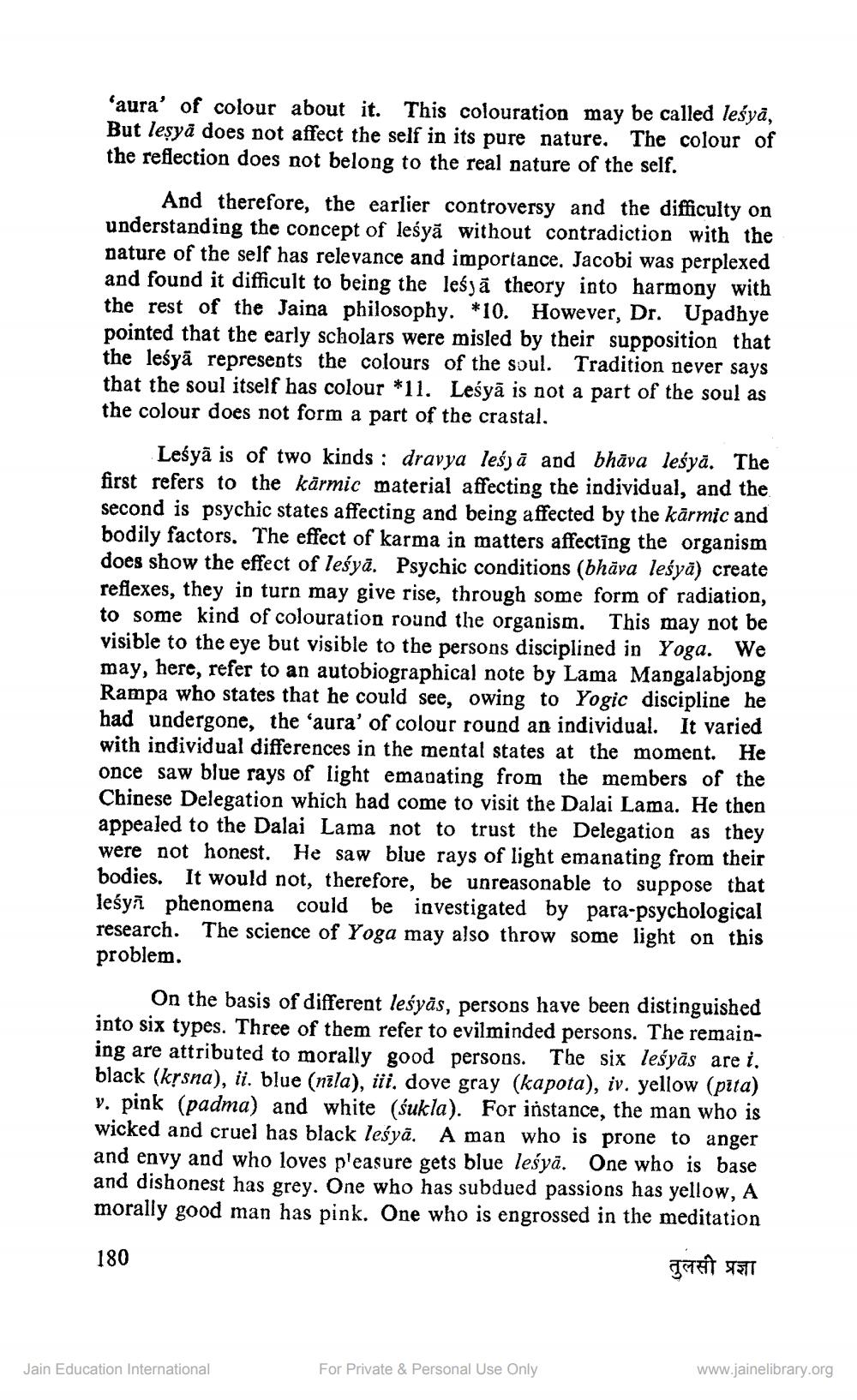________________
'aura' of colour about it. This colouration may be called leśyā, But leşya does not affect the self in its pure nature. The colour of the reflection does not belong to the real nature of the self.
And therefore, the earlier controversy and the difficulty on understanding the concept of leśya without contradiction with the nature of the self has relevance and importance. Jacobi was perplexed and found it difficult to being the lesy a theory into harmony with the rest of the Jaina philosophy. *10. However, Dr. Upadhye pointed that the early scholars were misled by their supposition that the leśya represents the colours of the soul. Tradition never says that the soul itself has colour *11. Leśya is not a part of the soul as the colour does not form a part of the crastal.
Lesya is of two kinds: dravya lesja and bhāva leśya. The first refers to the karmic material affecting the individual, and the second is psychic states affecting and being affected by the karmic and bodily factors. The effect of karma in matters affecting the organism does show the effect of lesya. Psychic conditions (bhāva leśyā) create reflexes, they in turn may give rise, through some form of radiation, to some kind of colouration round the organism. This may not be visible to the eye but visible to the persons disciplined in Yoga. We may, here, refer to an autobiographical note by Lama Mangalabjong Rampa who states that he could see, owing to Yogic discipline he had undergone, the 'aura' of colour round an individual. It varied with individual differences in the mental states at the moment. He once saw blue rays of light emanating from the members of the Chinese Delegation which had come to visit the Dalai Lama. He then appealed to the Dalai Lama not to trust the Delegation as they were not honest. He saw blue rays of light emanating from their bodies. It would not, therefore, be unreasonable to suppose that leśуn phenomena could be investigated by para-psychological research. The science of Yoga may also throw some light on this problem.
On the basis of different lesyās, persons have been distinguished into six types. Three of them refer to evilminded persons. The remaining are attributed to morally good persons. The six lesyās are i. black (kṛsna), ii. blue (nila), iii. dove gray (kapota), iv. yellow (pita) v. pink (padma) and white (śukla). For instance, the man who is wicked and cruel has black lesya. A man who is prone to anger and envy and who loves pleasure gets blue leśyä. One who is base and dishonest has grey. One who has subdued passions has yellow, A morally good man has pink. One who is engrossed in the meditation
180
तुलसी प्रज्ञा
Jain Education International
For Private & Personal Use Only
www.jainelibrary.org




